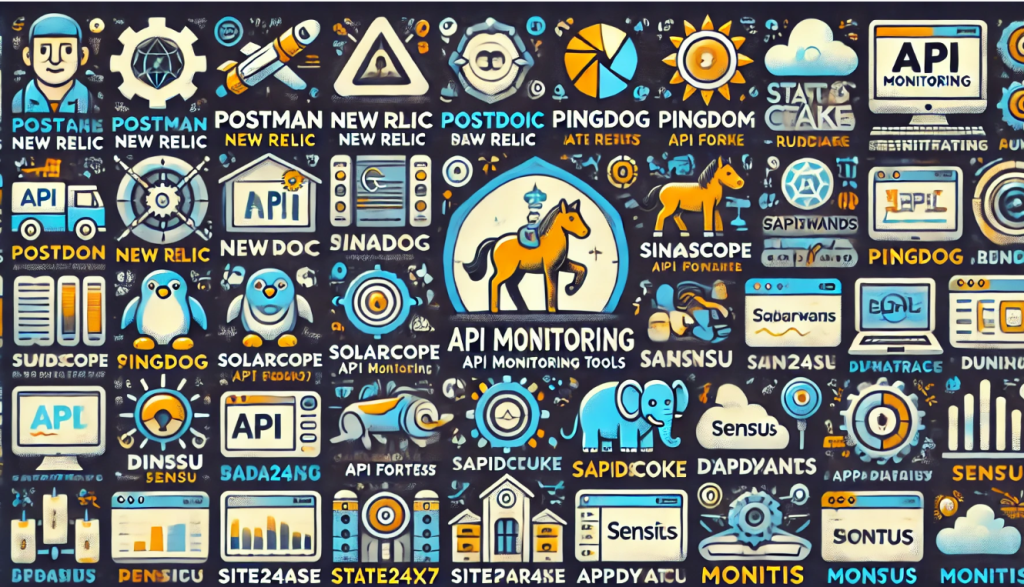
API monitoring is the practice of continuously tracking and analyzing the health, performance, and functionality of APIs (Application Programming Interfaces). It’s like having a watchful eye over these critical software components to identify and address any issues that might arise.
Here’s a breakdown of what API monitoring entails:
- Availability Monitoring: This ensures the API is up and running, and responding to requests. It’s akin to checking if the lights are on – a basic but essential function.
- Performance Monitoring: This measures how quickly the API responds to requests, identifying any latency or slowdowns that could negatively impact user experience. Think of it as gauging how responsive the API is to inquiries.
- Functionality Monitoring: This verifies if the API is processing requests correctly and delivering the expected results. It’s like confirming the API is not only answering, but answering correctly.
- Security Monitoring: This keeps an eye out for suspicious activity or potential security breaches that could compromise the API or the data it handles. Imagine having a security guard to ensure everything remains protected.
API monitoring tools play a crucial role in this process. These tools can:
- Simulate API calls: They mimic how applications interact with the API, proactively testing functionality and performance.
- Track response times: They measure how long it takes for the API to respond to requests, identifying any performance bottlenecks.
- Analyze response codes: They interpret the status codes returned by the API to identify errors or unexpected behavior.
- Alert on issues: They can trigger notifications when problems are detected, allowing developers and IT teams to address them promptly.
The benefits of API monitoring are numerous:
- Improved uptime and reliability: By proactively identifying and resolving issues, API monitoring helps to ensure that your APIs are available and functioning as expected.
- Enhanced user experience: Fast and reliable APIs lead to a smoother user experience for applications that rely on them.
- Faster issue resolution: Early detection of problems allows for quicker troubleshooting and remediation.
- Proactive security: Monitoring can help to identify and prevent security breaches before they cause damage.
In essence, API monitoring is an essential practice for ensuring the smooth operation and health of your APIs. By keeping a close watch on their performance, functionality, and security, you can maintain a positive user experience and prevent problems before they arise.
Here is a list of popular API monitoring tools, along with a brief description of each:
1. Postman
- Overview: A comprehensive API development and monitoring tool that helps in designing, testing, and monitoring APIs.
- Features: Real-time monitoring, automated testing, and detailed reports.
- Website: Postman
2. Runscope
- Overview: A dedicated API monitoring tool that helps ensure APIs are running smoothly and correctly.
- Features: Automated testing, performance monitoring, and integration with CI/CD pipelines.
- Website: Runscope
3. New Relic
- Overview: A full-stack observability platform that includes robust API monitoring capabilities.
- Features: Real-time monitoring, detailed analytics, and integration with various development tools.
- Website: New Relic
4. Dynatrace
- Overview: A comprehensive application performance monitoring tool that includes API monitoring features.
- Features: AI-powered monitoring, end-to-end transaction tracing, and automatic dependency detection.
- Website: Dynatrace
5. Pingdom
- Overview: A website performance and uptime monitoring tool that includes API monitoring.
- Features: Uptime monitoring, real-time alerts, and detailed performance reports.
- Website: Pingdom
6. APImetrics
- Overview: A dedicated API monitoring and performance measurement tool.
- Features: Real-time performance monitoring, detailed analytics, and SLA compliance reports.
- Website: APImetrics
7. Uptrends
- Overview: A comprehensive monitoring tool for websites, servers, and APIs.
- Features: API monitoring, uptime checks, performance analysis, and global monitoring locations.
- Website: Uptrends
8. StatusCake
- Overview: A website performance and uptime monitoring tool that includes API monitoring.
- Features: API uptime checks, real-time alerts, and performance metrics.
- Website: StatusCake
9. Checkly
- Overview: An API and site monitoring tool designed for modern DevOps workflows.
- Features: Automated testing, real-time alerts, and detailed reports.
- Website: Checkly
10. Better Uptime
- Overview: A modern uptime monitoring and incident management tool.
- Features: API monitoring, real-time alerts, and integration with popular incident management tools.
- Website: Better Uptime
11. AppDynamics
- Overview: A comprehensive application performance management tool that includes API monitoring.
- Features: End-to-end transaction visibility, real-time monitoring, and analytics.
- Website: AppDynamics
12. Moesif
- Overview: An API analytics and monitoring tool designed for API-first companies.
- Features: Real-time monitoring, detailed usage analytics, and anomaly detection.
- Website: Moesif
I’m a DevOps/SRE/DevSecOps/Cloud Expert passionate about sharing knowledge and experiences. I am working at Cotocus. I blog tech insights at DevOps School, travel stories at Holiday Landmark, stock market tips at Stocks Mantra, health and fitness guidance at My Medic Plus, product reviews at I reviewed , and SEO strategies at Wizbrand.
Please find my social handles as below;
Rajesh Kumar Personal Website
Rajesh Kumar at YOUTUBE
Rajesh Kumar at INSTAGRAM
Rajesh Kumar at X
Rajesh Kumar at FACEBOOK
Rajesh Kumar at LINKEDIN
Rajesh Kumar at PINTEREST
Rajesh Kumar at QUORA
Rajesh Kumar at WIZBRAND

 Starting: 1st of Every Month
Starting: 1st of Every Month  +91 8409492687
+91 8409492687  Contact@DevOpsSchool.com
Contact@DevOpsSchool.com
